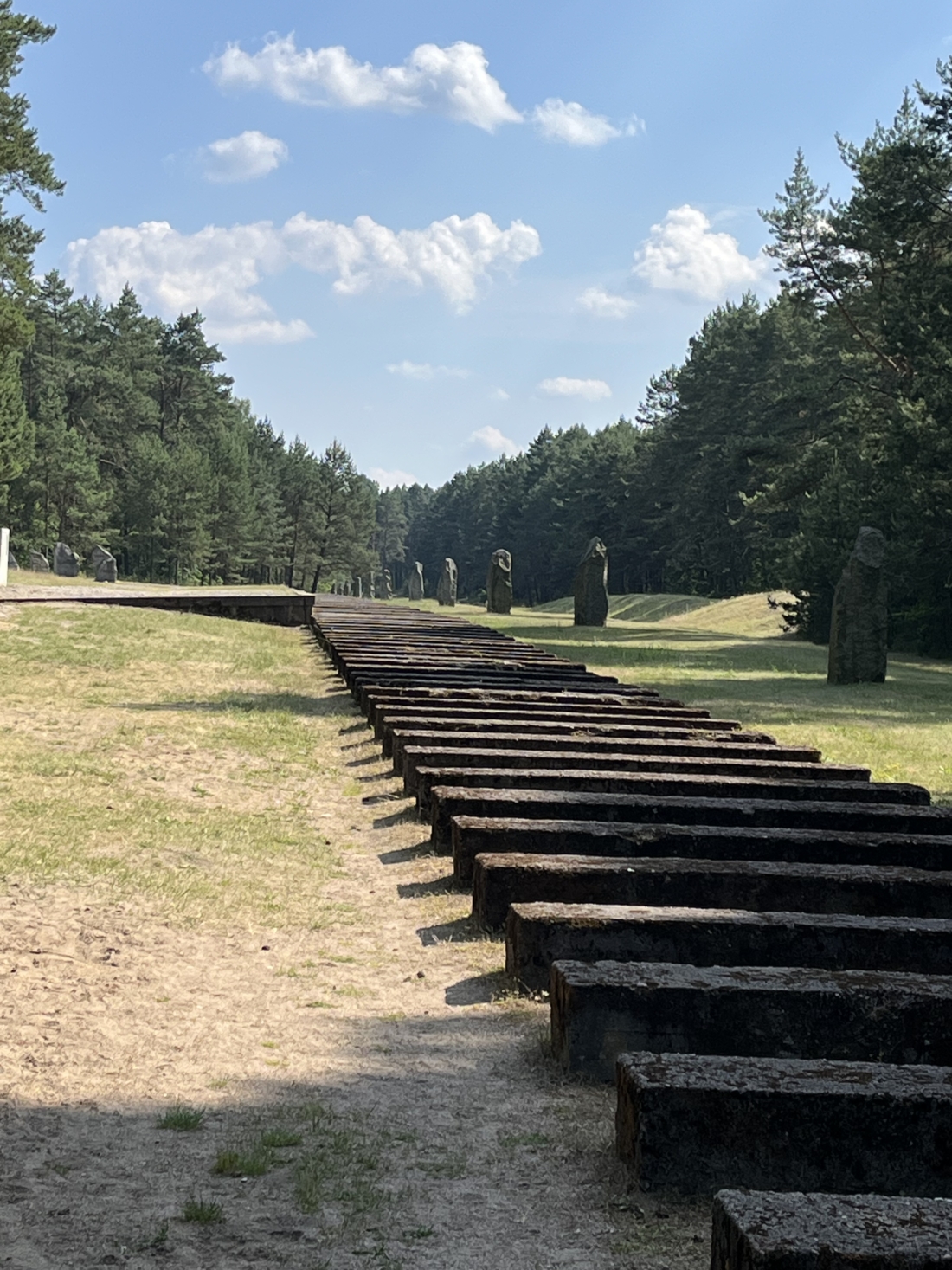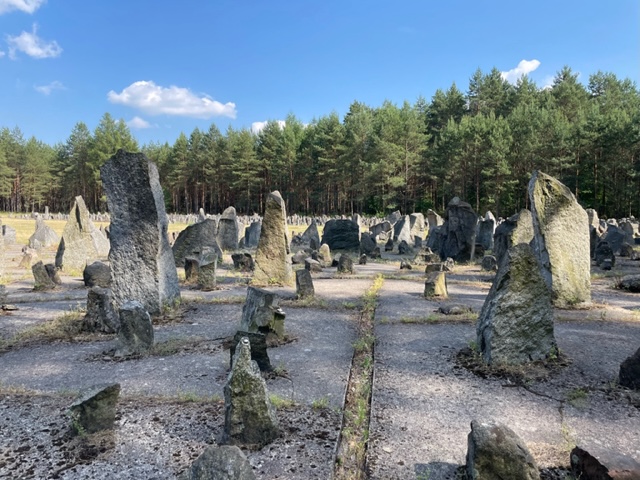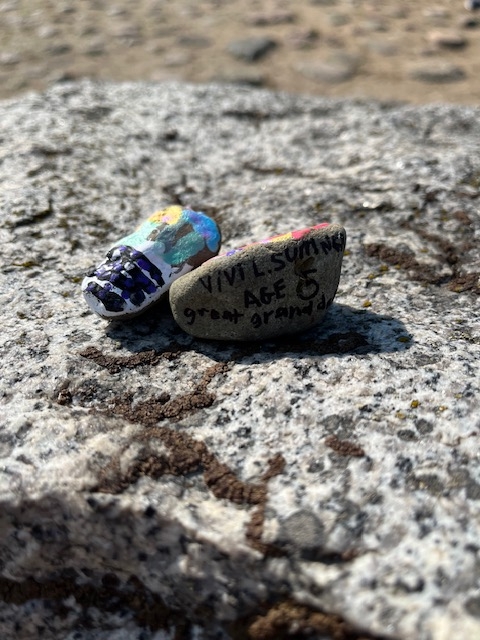This afternoon we visited Treblinka Memorial Site, a two hour bus ride outside of Warsaw. My friend and colleague Kate Vitek and I traveled with 20 stones from our community of Beachwood, a small suburb outside of Cleveland. Before our travels, we collected stones from those who wanted to pay tribute to Holocaust victims. I also brought stones from friends whose grandparents are survivors.
I looked out the bus windows and noticed the beautiful and lush green forest on a clear, sunny day was a stark contrast to the heavy emotions we prepared to face. A neighboring village is only one mile away from the haunting memories.
As we entered the site, our wonderful scholar Natalia Aleksiun, historian and professor, explained, ‘You need to see what is invisible.’ In an attempt to cover up the mass murder of 900,000 Jews, the Nazis destroyed the camp and any remaining evidence. An expansive symbolic representation of the train tracks and platform are arranged for visitors to understand the spatial layout of the death camp. Visitors must dive into their imagination to visualize the incoming trains packed with victims, including Warsaw Jewry, who only had a few hours upon arrival to meet their fate. I immediately felt anxious walking on the same ground.

Beyond the symbolic tracks is a wide space filled with hundreds of gravestones representing the gas chambers. Many of these stones are labeled with Polish towns. We are fortunate enough to be traveling with a Holocaust survivor, Howard Chandler, and his two daughters. We gathered around the stone marked with his hometown. He shared how difficult it is to visit the site and remember his mother, sister, and younger brother who lost their lives at Treblinka. All the teachers and students in the program clung to every word, recognizing the honor it is to be with him in that moment.

At the end of our visit, we placed the rocks from Beachwood throughout the memorial. Kate and I are extremely grateful to have the opportunity to pay tribute to the victims on behalf of Beachwood.

Lastly, I had the chance to place rocks from two of my close friends whose grandparents survived the war, but their loved ones did not. My childhood friend’s daughter, Vivi, painted two rocks. She used vibrant colors, a combination of blue, green, and yellow. It now quietly sits on a gravestone in Treblinka, a tangible and lasting connection between generations.

